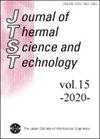考虑流体-刚体相互作用的倾转旋翼飞机转向飞行仿真
IF 0.9
4区 工程技术
Q3 THERMODYNAMICS
引用次数: 3
摘要
针对以V-22鱼鹰为代表的倾转旋翼机,提出了一种考虑流体与刚体耦合作用的六自由度转弯飞行仿真方法。倾转旋翼飞机在起飞或降落时将旋翼轴转向天空,具有像直升机一样的悬停功能。另一方面,它在飞行中通过向前转动旋翼轴来表现为往复式飞行器。与传统飞机相比,倾转旋翼飞机易受不稳定状态的影响。为实现飞机转弯飞行的数字化飞行,将运动计算域(MCD)方法与多轴滑动网格方法相结合。在MCD方法中,整个计算域本身与包含在该域内的物体一起运动,这使得飞机可以在物理空间中自由飞行,而不受区域大小的限制。此外,该方法也适用于转子的旋转。多轴滑动网格法是一种能够处理多个不同方向的旋转轴的计算技术,用于旋转两个旋翼和改变飞行器的飞行姿态。采用上述方法进行流场与刚体的耦合计算,飞机通过旋翼旋转获得升力和推进力,并通过操纵襟翼、升降舵、方向舵等飞控面进行回转飞行。此外,还找到了飞机转弯飞行、飞行姿态和产生升力所需的飞行控制面操纵变量。此外,还捕获了直线飞行和转弯飞行之间的流体流动差异。本文章由计算机程序翻译,如有差异,请以英文原文为准。
Turning flight simulation of tilt-rotor plane with fluid-rigid body interaction
Six degrees of freedom turning flight simulation is presented for a tilt-rotor aircraft represented by V-22 Osprey, considering interaction of fluid and rigid body in a coupled manner. A tilt-rotor aircraft has a hovering function like a helicopter by turning axes of rotor toward the sky during takeoff or landing. On the other hand, it behaves as a reciprocating aircraft by turning axes of rotor forward in flight. The tilt-rotor aircraft is known to be susceptible to instable state compared to conventional aircraft. For realizing Digital Flight of turning flight of the aircraft, combination with the Moving Computational Domain (MCD) method and the multi-axis sliding mesh approach is applied. In the MCD method, the whole of the computational domain itself moves with the bodies included inside the domain, which makes an airplane possible to fly freely in the physical space without any restriction of region size. Moreover, this method is also applied to rotation of rotors. The multi-axis sliding mesh approach is computational technique to enable us to deal with multiple rotating axes of different direction, and it is used to rotate two rotors and change flight attitude of the aircraft. As a result of the coupled computation between flow field and rigid body using above approach, the airplane gained lift and propulsion by rotating the rotor and flew in turning by operating flight control surfaces such as flaperons, elevator and rudders. Moreover, the manipulating variables of flight control surfaces needed for turning flight, flight attitude of the aircraft and generated lift were found. Differences of fluid flow between straight flight and turning flight were also captured.
求助全文
通过发布文献求助,成功后即可免费获取论文全文。
去求助
来源期刊
CiteScore
2.30
自引率
8.30%
发文量
0
审稿时长
5 months
期刊介绍:
JTST covers a variety of fields in thermal engineering including heat and mass transfer, thermodynamics, combustion, bio-heat transfer, micro- and macro-scale transport phenomena and practical thermal problems in industrial applications.

 求助内容:
求助内容: 应助结果提醒方式:
应助结果提醒方式:


